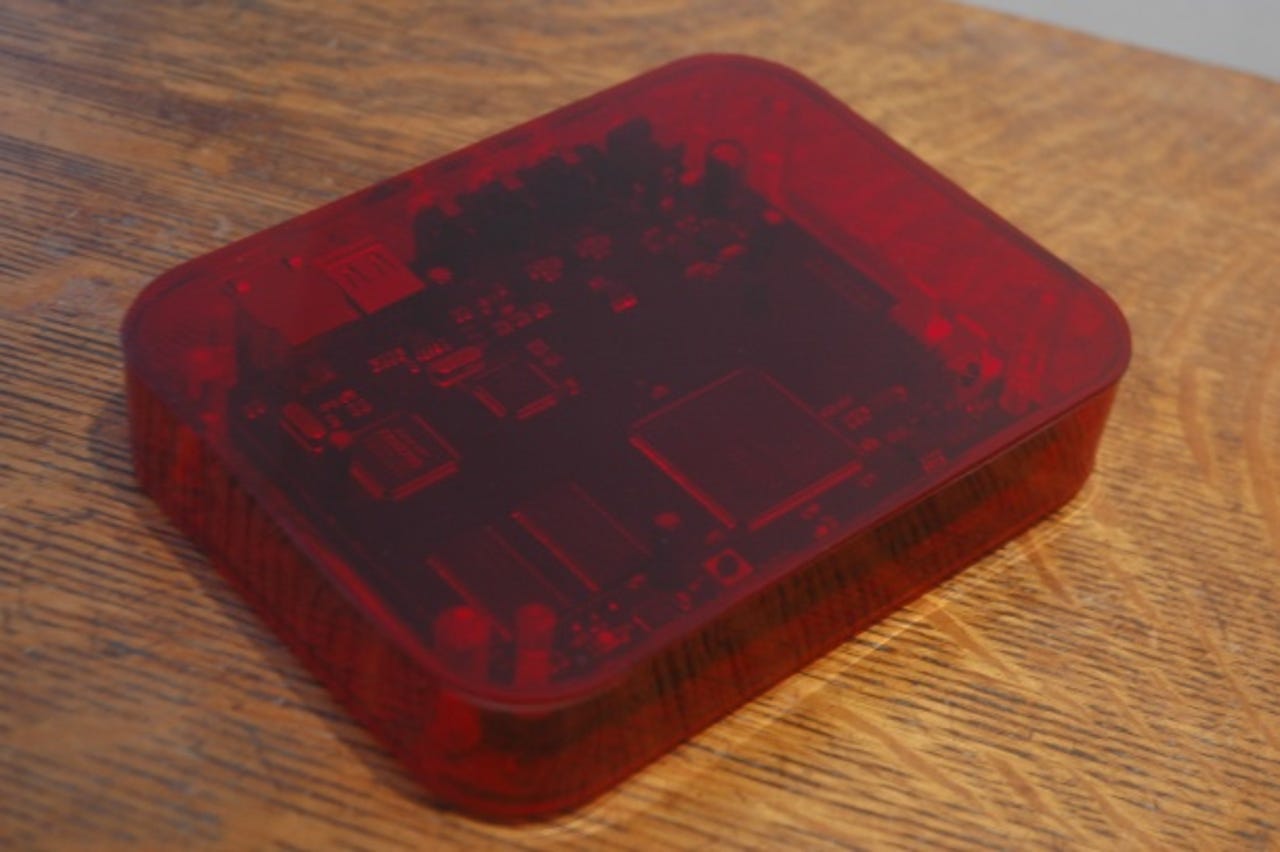Seven-day wonder: Inside the Promise TV

Circuit board
In the semi-rural idyll of Ascot, the Ludlam family has come up with a set-top box with a difference.
Promise TV records programmes from terrestrial digital Freeview, but unlike other systems, it doesn't rely on the viewer selecting shows to record. Instead, it records everything broadcast over seven days: every show transmitted on all 40-odd radio and TV channels, without pause. Recordings are grouped by category, as well as time or date, so it's like a constantly renewed watch-on-demand service.
The family, led by husband-and-wife team Richard and Kate Ludlam, handle everything to do with the Promise TV system themselves, including case design and prototype production. Sons Dominic and Christian Ludlam take care of the software and hardware design, respectively.
One of the trickier design problems on the Promise TV was the tuner board, the Ludlams told ZDNet UK. With up to six multiplexes to receive simultaneously, the incoming signal needs to be to split between six radio receivers, and the six 24Mbps decoded data streams need to be continually sent to the recording circuitry.
Radio frequency signals in particular are very sensitive to board layout, digitally generated noise and cross-talk between circuits, which makes design something of an art. Here, each receiver has three chips and a couple of filters, effectively producing a 144Mbps one-way wireless network card that works over many tens of miles.

Promise TV box
This is the remote head that links a TV to Ethernet while relaying infrared control codes from the remote. Up to four of these can be fitted around a building and connected back to the main box.
The natural length limitations of single-span wired Ethernet and the deliberate lack of wireless make it very hard to use this system to distribute TV outside a single building. The Promise.tv company hopes this will placate any broadcaster nervous that its content rights are being infringed.
EPG screen
A major advantage of the Promise TV system is its ease of use and guaranteed capture of wanted programmes — potentially even before the viewer knows they want to see them.
Dominic Ludlam, the software designer, has eschewed the grid system so common in other electronic programme guides (EPGs) for a simple timeline or content grouped by type.
Here, part of the list of the hundreds of films that had been broadcast in the week prior to ZDNet UK's visit is shown. Because it's unlikely the viewer would care when the film was broadcast, the time isn't shown. With news or sport, however, that information is displayed.
Circuit board
The main circuit board looks very similar to a wireless router, as it includes five wired Ethernet ports, memory, a CPU and I/O chips. In effect, that's what it is, but with a very specialised function and SATA interfaces to up to two hard disks.
Working as a small company, the designers found that some chip suppliers were extremely helpful, despite the possibility of very small sales — Marvell and Lattice were singled out — while others refused to provide technical support, but "did at least supply devices and documentation", said Dominic Ludlam. The worst offender let Promise TV get a long way down the design process before refusing to divulge missing documentation with essential information.
Promise TV set-top box
The inside of the set-top box is dominated by the storage — here, seven terabytes, spread across two disks.
This is the dominant cost of the device and the most critical component: the recent shortages of hard disks caused by floods in Thailand had significant knock-on effects on the company's planning.
The word terabyte itself is roughly the same vintage as the ARM architecture, both coming into existence in the first half of the 1980s.
For more on this story, see Four-strong team builds digital TV revolution.
Get the latest technology news and analysis, blogs and reviews delivered directly to your inbox with ZDNet UK's newsletters.